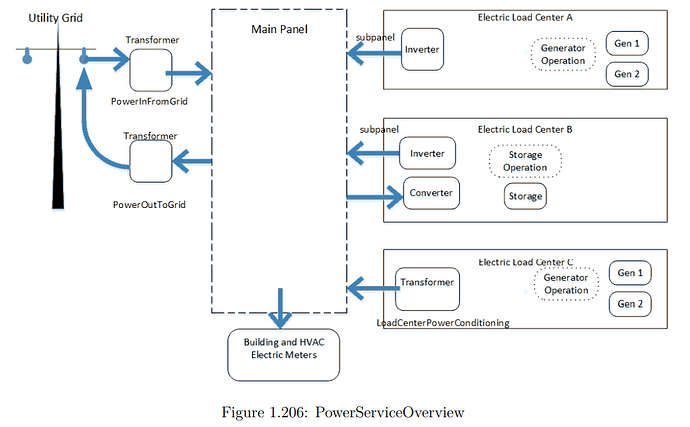I hope you are pretty well.
I am reaching out to discuss the potential development of a dedicated electric storage component (e.g., for battery systems) within the Ladybug Tools ecosystem, additionally for use with Dragonfly and URBANopt. Such a component would significantly enhance the ability to model and harness energy flexibility at both building and community scales, especially in the context of renewable energy integration and urban energy planning.
To support energy flexibility and align with the capabilities of EnergyPlus (which underpins much of URBANopt’s energy modeling), I suggest the following features for the electric storage component:
- Battery Storage Model:
- Support for both simple and kinetic battery models (similar to EnergyPlus’s ElectricLoadCenter:Storage:Simple and ElectricLoadCenter:Storage:Battery objects).
- Parameters for:
- Nominal capacity (kWh).
- Maximum charge/discharge rates (kW).
- Round-trip efficiency (%).
- State of charge (SOC) constraints (minimum and maximum SOC).
- Thermal losses impacting zone heat gains (if located in a conditioned space).
- Option to specify battery type (e.g., lithium-ion, lead-acid) for more detailed kinetic modeling.
- Flexible Scheduling:
- Input for charge/discharge schedules to control when the battery stores or releases energy. For example:
- Charge during off-peak hours or when renewable generation exceeds demand.
- Discharge during peak electricity price periods or high-demand hours.
- Support for schedule inputs compatible with Ladybug Tools’ data collections (e.g., hourly or sub-hourly schedules).
- Power Input and Output Control:
- Ability to define specific power inputs (e.g., from PV arrays, wind turbines, or backup generators like diesel engines (wind turbines and diesels are not still developed in LB, what it is possible for this maybe something like spreadsheet input at the moment)).
- Support for scenarios where power generation exceeds demand (e.g., diesel generators producing surplus power during outages), allowing excess energy to be stored rather than wasted.
- Integration with Electric Load Center logic (inspired by EnergyPlus) to manage power flows between generators, storage, and building/community loads.
- Community-Scale Integration:
- Compatibility with Dragonfly for modeling district-scale energy systems, enabling batteries to be shared across multiple buildings or centralized at the community level.
- Integration with URBANopt to optimize storage operation within district energy systems, considering:
- Aggregated load profiles across buildings.
- Time-of-use (TOU) electricity tariffs and demand charges.
- Renewable energy forecasting and grid interaction (e.g., net metering, grid export limits).
- Support for modeling microgrids or virtual power plants, where storage plays a key role in balancing supply and demand.
- Interoperability with Other Systems:
- Ability to connect storage to renewable energy components (e.g., PV arrays modeled in Ladybug) and backup generators (e.g., diesel or natural gas engines).
- Support for AC/DC power flows, including inverter efficiencies (e.g., using EnergyPlus’s ElectricLoadCenter:Inverter and ElectricLoadCenter:Storage:Converter objects as a reference).
- Option to model storage as part of a hybrid energy system, combining renewables, storage, and grid power.
I found the attached OSM examples, maybe helpful. The main drawbacks of this kind of equipment in the OpenStudio is the lack of visual representation of the equipment, such as batteries.
pv_and_storage_facilityexcess.osm (322.7 KB)
storage_liion_battery.osm (79.1 KB)
Thank you very much for your support and assistance.
Sincerely
Behnam
NUI Maynooth, Ireland
